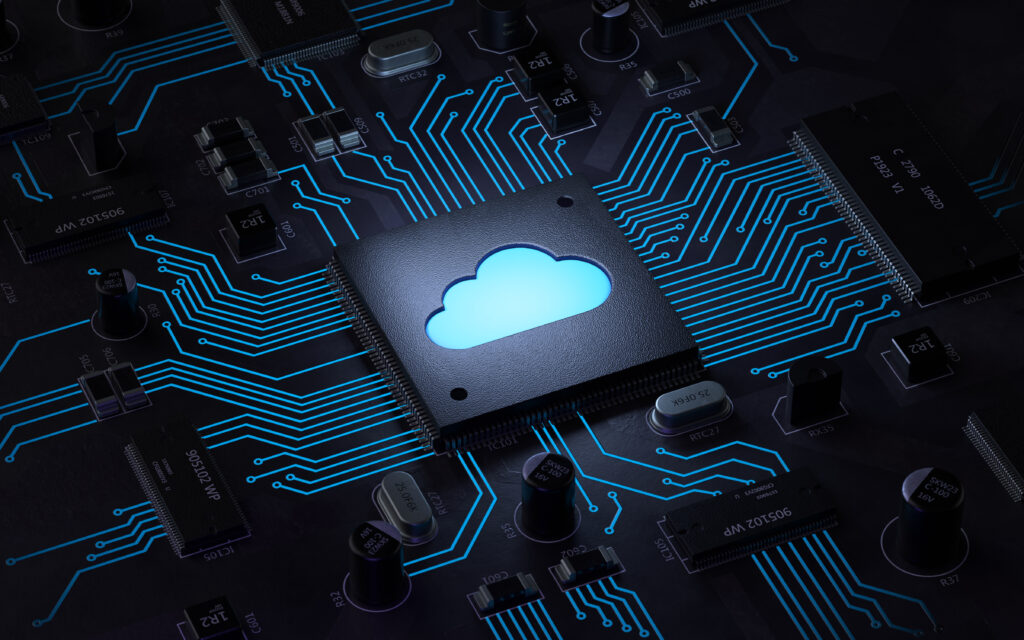TRINIDAT-WIKI
The Internet of Things
Special features of programming IoT applications
Programming IoT applications: The Internet of Things (IoT), or the Internet of Things, refers to the increasing networking of devices, sensors and other assets.
The aim is for physical things, i.e. devices of various kinds, to know their status information and to be able to share their data with other devices via an IP network.
To build an IoT solution, a so-called IoT platform is necessary. It provides the infrastructure for communication between the devices and applications and enables additional analyses and evaluations.
IoT Platforms
The best-known platforms are Amazon Web Services (AWS) and Azure IoT from Microsoft. With both providers, the services are made available for Linux distributions or Microsoft Windows. However, for some use cases it also makes sense to rely on self-developed solutions, since ready-made platforms also have limitations that can only be opened up by licensing and support costs. The following article therefore describes some basic things to consider when building and programming IoT applications.



Areas of use for IoT applications
The Internet of Things provides the basis for new business applications and business ideas. For example, a machine manufacturer has developed its own platform in which all developed sensors and devices (so-called sensor kits) use the same communication standards. Operating parameters and measured values are exchanged via the IoT platform. The collected data is loaded into application software and is available for various services such as availability analyses, monitoring of tool life and maintenance intervals in real time. This helps to reduce machine downtime and cut costs.
Through the interfaces offered, other services can also be supplied with the collected data. The application software can be accessed either via mobile devices or a classic web application. By using an IoT application, it has been possible to establish a flexibly scalable platform from the customer’s point of view for the further use of the data and information generated during product use. The possibility of easily retrofitting existing modules with the required sensors and hardware also makes it possible to acquire customers of older machines for the business model.
Advantages of IoT applications
A significant benefit and thus advantage is the data collected from the individual devices and sensors and the processing of this data. Whoever becomes master of this flood of data will have countless exciting possibilities.
A great added value is the connection of the devices through simple programming logic and the reading and analysis of the data on a server, whereby corresponding models can calculate the occurrence of probabilities. Once the data has been analyzed, the results can be sent back to the devices and influence the operational process on site. On the one hand, the IoT thus enables the capture of a mirror image of the actual state, but can also read out complex patterns through smart algorithms, Big Data and even Artificial Intelligence.
This also makes it possible to derive forecasts about future states and trends. This enables, for example, more accurate and faster decisions to be made and high savings or potentials to be identified on this basis.
Contact us today...
... and start the digitization of your processes and products with an initial, free consultation.
Special features in the development of IoT applications
The development of IoT applications is a challenging task. The reasons are the already mentioned diverse and complex possibilities of different devices and their networking. Ready-made IoT platforms are up to this challenge and offer simple connections with the necessary interfaces.
Above a certain size, an individual solution of an IoT platform can also be advantageous, since this enables, among other things, a guaranteed integration of already existing devices or systems and there is no (cost) dependence on platform providers.
Contrary to what is often expected, there is no ONE best service provider for IoT applications. The (individual) software and technologies used must fit the use case exactly. We therefore recommend clarifying in advance in which specific market and industry environment your selected IoT provider has the most experience. Attention should be paid to the service provider’s expert and domain knowledge, which can also be proven.
The cost of an IoT solution
Once the technical requirements have been taken into account and the IoT platforms in question or an in-house solution has been selected, the next task is to understand and compare the respective cost points. In addition to the implementation effort, there are usually ongoing costs, such as the provision of software modules, the edge connection points, and especially the processing (computing power provided) and hosting of data in the cloud. It is worth taking a detailed look here to avoid falling into a cost trap.

Step by step to the IoT solution
On the basis of the preceding requirements analysis, it is necessary to develop a business model or adapt the existing one to IoT. In this way, it can be plausibly determined which software architecture and technology can be used to manage the IoT data budget. In addition, it is not uncommon for the business model itself to place requirements on the IoT platform and (service) functions that do not fit into the platform’s area of responsibility. In this case, the service provider must be able to contribute its know-how in a targeted manner and develop suitable software and services specifically.
We develop your individual IoT project
We will be happy to help you choose the right IoT environment for you and explain exactly what you should pay attention to right from the start. In a free initial consultation, we will advise you on all questions relating to the programming of IoT applications.